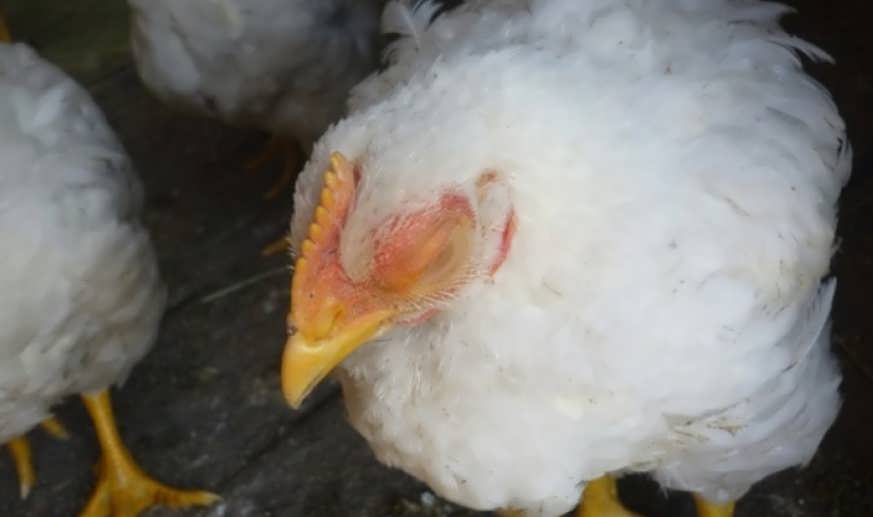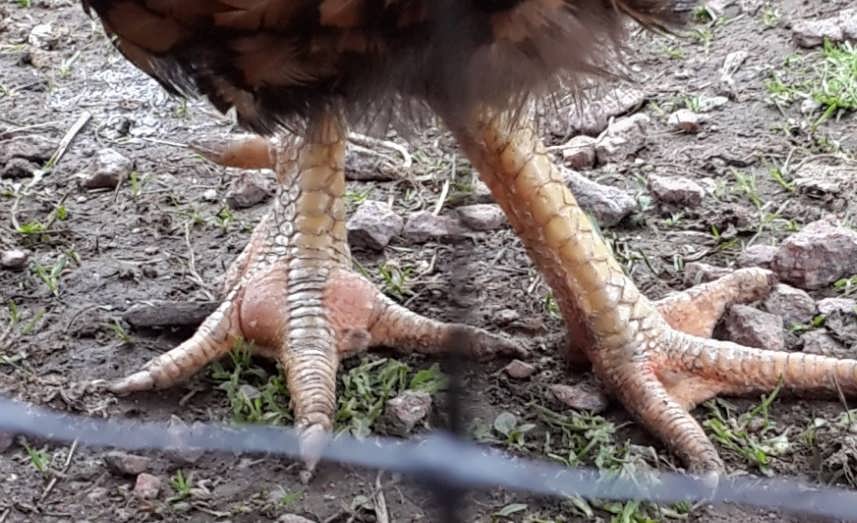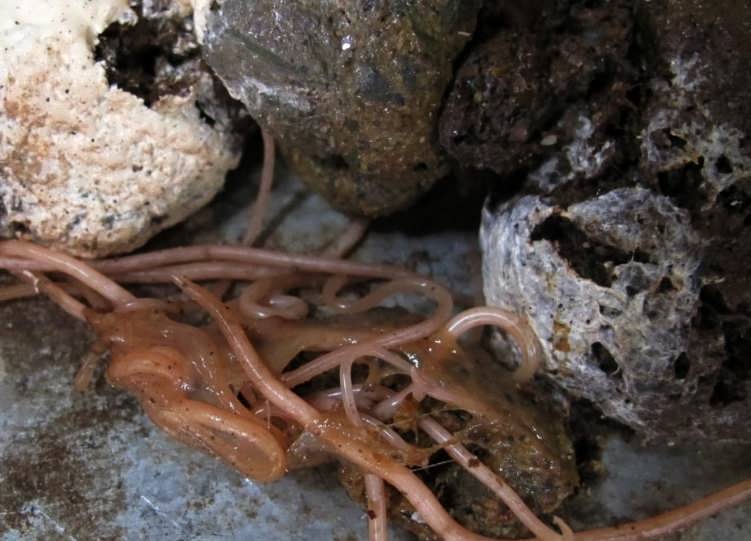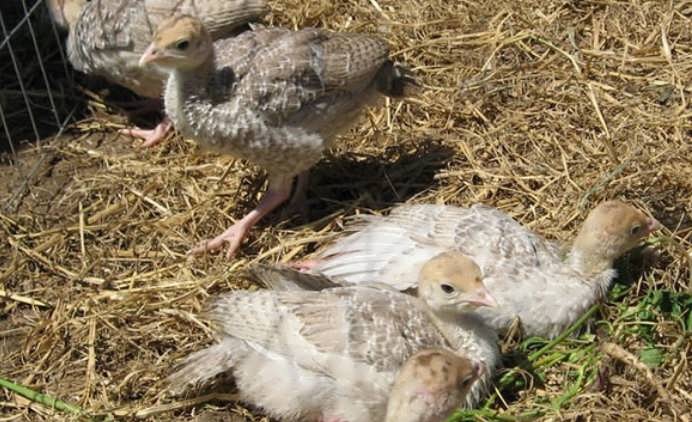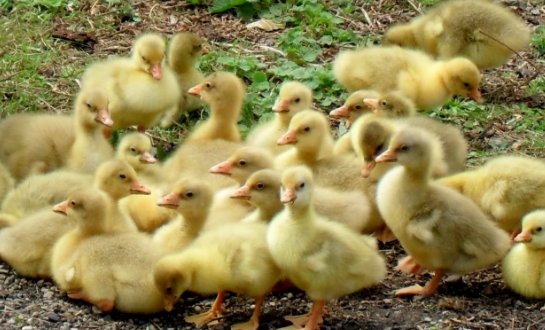Breeding turkeys is an interesting and profitable business. This bird is quite demanding on the conditions of detention, but with proper care, in a short time you can get a good increase in young animals.
It is not always possible to get urgent advice from veterinarians. Before you start a bird in your backyard, it is advisable to get acquainted with what turkeys are sick with and how to treat them at home.
Some heavy breeds reach 30 kg after six months of proper care and intensive feeding. pure meat. This is real with a competent approach to growing poultry.
- Diseases of turkeys, their signs and treatment
- Histomonosis in turkeys: symptoms and treatment
- Sinusitis in turkeys: treatment
- Mycoplasmosis symptoms and treatment
- Worms in turkeys
- eye disease in turkeys
- diarrhea in turkeys
- Coccidiosis in turkeys: symptoms and treatment
- Pullorosis of turkeys: signs and treatment
Diseases of turkeys, their signs and treatment
Experienced farmers know that young individuals respond best to treatment. If you notice the approaching disaster in time and isolate the sick turkey, you can avoid a mass fall of the bird.
All diseases can be divided into two large groups:
- Infectious (of which the most common are histomonosis, coccidiosis, mycoplasmosis, pullorosis, sinusitis, conjunctivitis).
- Non-infectious (avitaminosis, hard goiter, various taste perversions).
Sick turkey poults drastically change their behavior, they lose activity, they shun their fellows and in most cases refuse to eat. The wings of weakened turkey poults are lowered, they look ruffled, disheveled, they move with difficulty, swaying when walking. A sick bird usually tries to find a secluded corner.
There are also special signs for each disease that can be noticed if you know about them in advance.
It is important! It is advisable to carry out treatment at the first stage, otherwise the bird will have to be destroyed. It is important to know what turkeys are sick with, the main symptoms and the first signs of animal diseases. It is effective to determine the type of disease by litter, behavioral characteristics.
Histomonosis in turkeys: symptoms and treatment
The incidence of histomonosis can be eliminated if chickens, ducks and turkeys are not raised in the neighborhood. Workers who directly care for poults are not allowed to keep poultry at home.
Signs of histomonosis disease:
- the stool becomes orange-yellowish;
- the turkey abruptly loses activity;
- an animal with histomonosis usually stands at a distance from other turkey poults, its eyes are closed;
- stops eating;
- the skin becomes blue-black.
The most susceptible to infection are turkey poults, from 3 to 21 weeks of age.
What to treat? The farmer is required to immediately isolate the turkey and carry out disinfection measures in the poultry house. For the treatment of histomonosis, drugs such as trichopolum, furazolidone, osarsol are purchased. Sometimes treated with metronidazole, the dosage depends on the age and weight of the turkeys.
Sinusitis in turkeys: treatment
Infectious sinusitis can affect turkey poults between the ages of 2 weeks and 4 months if they have a weakened immune system for some reason. A strong bird is able to cope with the infection on its own. The disease can be protracted and develop into a chronic form. The most dangerous time is autumn and winter. There are no visible symptoms for the first week, but the disease spreads rapidly and can develop into an epidemic.
The acute period of the disease is expressed by the following symptoms:
- mucus from the nasal passages;
- frequent yawning;
- the bird makes wheezing and cough-like sounds, so because of the swelling of the larynx, it is difficult for the turkey to breathe;
- eyes stick together from purulent discharge;
- the turkey has a swollen head.
Symptoms of chronic sinusitis:
- turkeys do not gain weight;
- often and a lot of other diseases due to reduced immunity;
- eggs in such a poultry house are usually infertile.
An accurate diagnosis can only be established by laboratory analysis. Treatment is with tetracycline antibiotics. The procedure for injecting the drug into the sinuses is quite complicated and is carried out by veterinarians.
Self-treatment with folk methods of sinusitis does not lead to anything good, only time is lost.
For five days, you can drink the bird with an aqueous solution of Tylosin-200.
From the common cold, powdered Farmazin-500 is used in two ways:
- 1 gram of the substance per 1 liter of water, drink 2 times a day for 10 days
- inject the drug with a syringe into the nasal passages, 2 ml 3 times a day.
Mycoplasmosis symptoms and treatment
Respiratory mycoplasmosis turkeys can become infected in the wet and cold season.
The symptoms are as follows:
- inflamed eyes;
- may fall while walking.
- mucus comes out of the eyes and nasal passages;
- breathing is difficult.
If the disease in turkeys up to 2 months of age progresses strongly, there is no point in treating it. Adult turkeys that fall to their feet are immediately treated with oxytetracycline and chlortetracycline.
The drugs are added to the feed for seven days. (400 g per 1000 feed). Veterinarians may prescribe chloramphenicol or erythromycin.
Worms in turkeys
Worms in poultry is a very common occurrence. Turkeys can become infected with worms through food, contaminated water, dirty bedding. Moreover, they can get into the gastrointestinal tract, on the respiratory system.
Symptoms are mild. You may not immediately understand that the turkeys are sick.
But gradually the bird loses weight, the legs grow thin and do not hold even a small weight. Immunity is reduced to a minimum.
Veterinarians most often prescribe phenothiazine or piperazine sulfate to birds. You can use other pharmaceutical preparations of the new generation. The scheme of drinking with preparations for worms is combined with enhanced nutrition, disinfection of the premises and equipment.
eye disease in turkeys
Harmful dust particles in the room where the young are kept can lead to eye diseases in turkey poults. High concentrations of dust and gases can cause severe corneal inflammation in young animals.
With timely treatment, they will not leave serious consequences. Turkey poults at 2 months of eye disease endure as hard as two weeks old. Running forms can provoke unpleasant complications, since the body of a young bird is not yet able to cope with the slightest inflammatory processes.
One of the most common eye diseases is conjunctivitis.
How to treat conjunctivitis in turkeys
This disease can be immediately noticed by profuse lacrimation and suppuration of the eyes. If you do not start treatment, the eyes will become covered with an accumulation of purulent discharge, the turkeys will not be able to open them. Sometimes purulent mucus can also come from the nasal passages of a bird.
With conjunctivitis, a chick can get sick with a weakened immune system and a cold. This means that the conditions of detention are not suitable. The first step is to move the cage with turkeys to a warm and dry room. The diet of the bird should be reviewed, strengthened with vitamin supplements. Sick turkey poults should be regularly flushed with boric acid and treated with antibiotics if necessary. Apply chloramphenicol drops, 1 drop in the morning and evening.
diarrhea in turkeys
Diarrhea in turkeys is a common occurrence if the sanitary and hygienic conditions for keeping poultry are violated, young animals are kept together with adults. The situation is aggravated if the house is shared with chickens and ducks. Yellow diarrhea indicates an advanced infectious disease. If turkeys have black diarrhea or brown color, there is a possibility that the feed is of poor quality, sour.
There are several types of diseases in which turkeys suffer from diarrhea. To resist infection, you need to carefully observe the sanitary conditions of poultry keeping and know how to treat diarrhea in turkeys.
Coccidiosis in turkeys: symptoms and treatment
Coccidiosis refers to frequent diseases in young animals of the invasive form in the autumn-spring periods, during hot weather with high humidity. Until the turkey is 3 months old, its immune system is not yet able to cope with parasitic organisms that have entered the digestive tract - coccids. Each type of bird has its own specific type of bacteria, so this disease does not pass from chickens and ducks to turkey poults. If you immediately notice the first sick person, you can save the whole house.
Coccids destroy the gastrointestinal tract of birds without timely treatment leading to death.
Symptoms appear about a week after infection:
- the turkey refuses to eat;
- drinks a lot of water;
- a significant decrease in activity;
- the eyes of the turkey are half-closed, the wings sag, lumps of dirt appear on the feathers;
- loose and frequent stools, there are bloody inclusions;
- during the transition to the chronic stage, the bird falls to its feet.
Another characteristic feature: the turkey lets out a plaintive squeak.
To verify the diagnosis, conduct laboratory tests. The veterinarian prescribes antibiotic treatment (among them are Diakoks, Baykoks , Solikoks, Koksitsan or Sulfadimetoksin). They are bred in drinking bowls, mixed with the main feed or injected intramuscularly. The process will take more than one day.
Treatment is carried out for a long time and systematically, and even for some time after the symptoms disappear.
Then rehabilitation measures are carried out (the introduction of probiotics, vitamins into the diet). Treatment with iodinol is effective, which quickly raises weakened turkey poults to their feet (inside with water or in milk in a ratio of 1:5).
Important. Turkeys that die from coccidiosis should not be eaten. Carcasses are disposed of by incineration. Places of keeping after sick birds are disinfected. The next batch of birds to this place can be populated no earlier than in 2 weeks.
Pullorosis of turkeys: signs and treatment
Turkey poults can get sick with white bacterial diarrhea (pullorosis) already from the age of three. This is a big problem for the birds and the farmer, as the disease progresses very quickly, the mortality rate reaches 70%.
Typical symptoms:
- white diarrhea in turkeys in the form;
- turkeys are lethargic, inactive;
- I constantly drink water;
- clumped fluff;
- turkeys settle on their feet.
You can try to treat the bird with mixtures of antibiotics and sulfonamides added to the drink (tetracycline, chloramphenicol, furazolidone, furacilin). Practice shows that if turkey poults get sick with pullorosis, then in most cases the therapy has no result. Ill individuals will no longer fully develop.
Important. Before the delivery of a new batch, a global disinfection of all places where birds are kept, drinkers and feeders is carried out. To prevent pullorosis, young animals must be kept separate from adults.

